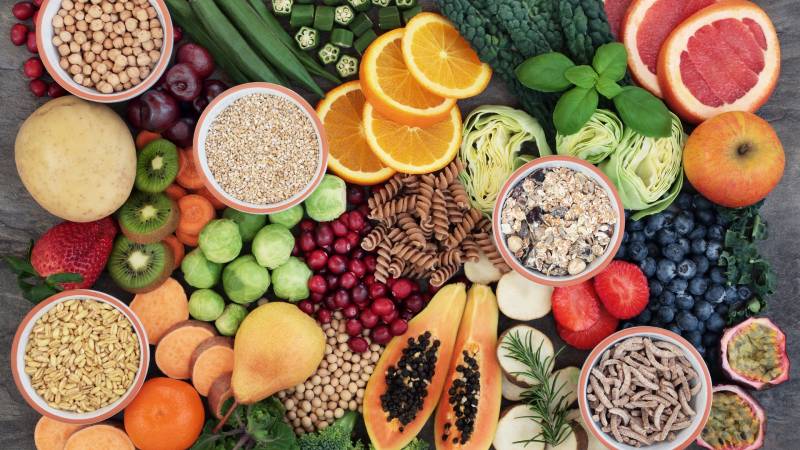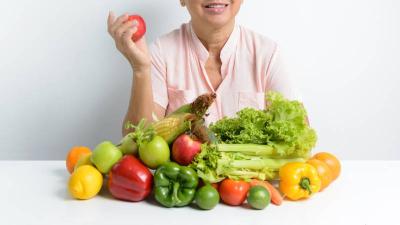Using Foods Against Menstrual Pain
Most women experience some menstrual pain, For up to 15 percent, it is severe enough to interfere with work and other activities for one or more days every month.1 Sometimes the pain diminishes after childbirth, but for many women it continues.2
What Causes the Pain?
Before a period begins, the cells that form the lining of the uterus, also called endometrial cells, begin to break down during menstruation and release large amounts of inflammatory prostaglandins. These chemicals constrict the blood vessels in the uterus and make the muscle layer contract, causing painful cramps. Some of the prostaglandins enter the bloodstream, causing headache, nausea, vomiting, and diarrhea.2
Researchers have measured the number of prostaglandins produced by cells of the uterus and found that it is higher in women with menstrual pain than for women who have little or no pain. This helps explain why nonsteroidal anti-inflammatory drugs (NSAIDs) work for menstrual pain. Ibuprofen (Motrin), naproxen (Aleve), and other NSAIDs reduce the production of prostaglandins. NSAIDs have been found to decrease menstrual flow, which may reduce menstrual pain.
A Closer Look at Estrogen
There may be a more fundamental approach. Rather than focusing on the prostaglandins themselves, it may help to look at the cellular “factories” that make them. Oral contraceptives, or birth control pills, lower the production of prostaglandins by slowing the growth of the uterus lining. As a result, 90% of women who take birth control pills experience reduced menstrual pain. However, diet changes may lead to similar results.
Estrogens are female sex hormones, a sort of hormonal fertilizer that makes the cells of the body grow. In every monthly menstrual cycle, the estrogen levels in a woman’s body rises and falls. These hormones are responsible for breast development at puberty, and each month they cause the lining of the uterus to thicken in anticipation of pregnancy.
Estrogen gradually rises as a woman’s period ends and falls again at the start of a new cycle. Then, for about two weeks, the hormone rises toward a peak and falls quickly around the time of ovulation. It rises again in the second half of the month and then falls just before the next period for a total of two rises and falls throughout the cycle. The uterus sheds its lining in a menstrual flow, accompanied by crampy pain.
Foods That Fight Inflammation
Naturally, eating foods that decrease inflammation in the body will help to tame menstrual cramps. These foods include fruits, vegetables, whole grains, legumes, nuts, and seeds. Research has shown that both a vegetarian and plant-based eating pattern work to decrease inflammation in the body. This decrease is due to the high number of antioxidants and plant chemicals found in plant foods that help the body to function optimally.,,
There is a connection between the food you eat and your body’s estrogen levels. Animal products and added oils increase the levels of estrogen in the body. The more estrogen-based foods you consume, the more likely your uterine lining becomes abnormally thick. As a result, when it begins to break down during the menstrual cycle, this process creates more prostaglandins, resulting in higher levels of pain.
How Foods Change Hormones
A low-fat, high-fiber diet can significantly reduce estrogen levels.5,6 Cancer researchers have taken great interest in this phenomenon because lowering the level of estrogen in the blood helps reduce the risk of breast cancer. Less estrogen means less stimulation for cancer cell growth.
If a woman eating a Western diet cuts her fat intake in half, her estrogen level will be about 17% lower. If the amount of fat is cut even more, the estrogen level will drop further. A lower hormone level will have less effect on the uterine cells.
In addition to lowering estrogen, a low-fat diet may also be beneficial because high-fiber vegetables, beans, fruits, and whole grains help the body to eliminate estrogens. Estrogen is normally pulled from the bloodstream by the liver, which sends it through a small tube, called the bile duct, into the intestinal tract. There, fiber soaks it up like a sponge and carries it out with other waste. The more fiber in the diet, the better the natural “estrogen disposal system” works.
Animal products and many processed foods do not contain fiber. When an individual’s diet consists predominantly of packaged foods, refined grains, meat, or dairy, daily fiber needs may not be met. The extra estrogens, which should bind to fiber in the digestive tract and leave the body, get absorbed back into the bloodstream. This hormone “recycling” increases the amount of estrogen in the blood.
However, the reabsorption of estrogens can be blocked with the fiber found in grains, vegetables, beans, and other plant foods. When researchers asked women in Japan what foods they ate most often and how they would rate their menstrual pain, they found that eating high amounts of fiber was significantly related to having less menstrual pain. By blocking the reabsorption of estrogen, fiber helps to reduce estrogen levels and subsequent menstrual cramps.
Not only do animal products lack fiber, but they also can contribute to worse menstrual pain. A study showed that higher intakes of red meat and processed meat may lead to endometriosis—a painful condition in which uterine cells extend to other organs in the body. The women who ate the most red meat (more than two servings a day) increased their risk of developing endometriosis by as much as 56%. In addition, dairy products may contribute to extra estrogen circulating in the blood since cows are usually pregnant while being milked and may pass along estrogen through their milk.
By avoiding animal products, processed foods, and added oils, estrogen production is reduced. And by replacing chicken, skim milk, and other nonfiber foods with grains, beans, and vegetables, estrogen elimination is increased.
In a research study published in Obstetrics & Gynecology, a low-fat, vegan diet significantly reduced pain and PMS for many women. The study included 33 women who followed either the low-fat vegan diet or their regular diet and then switched treatments. The diet change was designed to do two things. First, it eliminated all animal fats and nearly all vegetable oils. Second, its emphasis on plant-based foods increased the fiber in the diet. While these women followed the low-fat vegan diet, the intensity of their pain was significantly lower than during their regular diet. They also noticed less water retention and fewer mood swings. The effect of the diet was so powerful that some women refused to switch back to their regular diet, even though the study design required it.
Putting Foods to Work
The key to success is to follow the diet strictly so that the beneficial effects are evident over time.
Eat plenty of:
- Whole grains: brown rice, whole-grain bread, oatmeal, etc.
- Vegetables: broccoli, spinach, carrots, sweet potatoes, Swiss chard, Brussels sprouts, etc.
- Legumes: beans, peas, lentils
- Fruits: apples, mangoes, berries, oranges, etc.
Avoid completely:
- Animal products: fish, poultry, meats, eggs, and dairy products
- Refined grains: white bread, refined cereals, pastries, etc.
- Added vegetable oils: salad dressings, margarine, and all cooking oils
- Fatty foods: doughnuts, cheese, French fries, potato chips, etc.
This may sound like a significant change, but eliminating foods slowly over the course of a few days can make the change easier. Experiment with new foods and try to get family members, friends, and partners involved in recipe tasting. You may notice many benefits over the course of your next menstrual cycles, including reduced menstrual cramps, weight loss, and increased energy. This sense of relief can be rewarding to many women. In order to prevent unwanted menstrual cramps or other symptoms, avoiding all animal products and oily foods is important. Eat foods in their natural state, such as brown rice instead of white rice and whole-grain bread instead of white bread, to make sure you consume all their nutrients and fiber content. Try out eating this way to see if it changes your next few cycles and learn how something as simple as changing your diet can lead to powerful improvements in your health.
References
- Kataoka M, Togashi K, Kido A, et al. Dysmenorrhea: evaluation with cine-mode-display MR imaging-initial experience. Radiology. 2005;235:124-131.
- Proctor M, Farquhar C. Diagnosis and management of dysmenorrhoea. BMJ. 2006;332:1134-1138.
- Durain D. Primary dysmenorrhea: assessment and management update. J Midwifery Womens Health. 2004;49:520-528.
- Hendrix SL, Alexander NJ. Primary dysmenorrhea treatment with a desogestrelcontaining low-dose oral contraceptive. Contraception. 2002;66:393-399.
- Turner-McGrievy GM, Wirth MD, Shivappa N, et al. Randomization to plant-based dietary approaches leads to larger short-term improvements in Dietary Inflammatory Index scores and macronutrient intake compared to diets that contain meat. Nutr Res. 2015;35:97-106.
- Haghighatdoost F, Bellissimo N, de Zepetnek JOT, Rouhani MH. Association of vegetarian diet with inflammatory biomarkers: a systematic review and meta-analysis of observational studies. Public Health Nutr. 2017;20:2713-2721.
- Watzl B. Anti-inflammatory effects of plant-based foods and of their constituents. Int J Vitam Nutr Res. 2008;78:293-298.
- Barnard ND. Your Body in Balance: The New Science of Food, Hormones, and Health. New York, NY: Grand Central Publishing; 2020.
- Clemons M, Goss P. Estrogen and the risk of breast cancer. N Engl J Med. 2001;344:276-285.
- Wu AH, Pike MC, Stram DO. Meta-analysis: dietary fat intake, serum estrogen levels, and the risk of breast cancer. J Natl Cancer Inst. 1999;91:529-534.
- Prentice R, Thompson D, Clifford C, Gorbach S, Goldin B, Byar D. Dietary fat reduction and plasma estradiol concentration in healthy postmenopausal women. J Natl Cancer Inst. 1990;82:129-134.
- Aubertin-Leheudre M, Gorbach S, Woods M, Dwyer JT, Goldin B, Adlercreutz H. Fat/fiber intakes and sex hormones in healthy premenopausal women in USA. J Steroid Biochem Mol Biol. 2008;112:32-39.
- Nagata C, Hirokawa K, Shimizu N, Shimizu H. Associations of menstrual pain with intakes of soy, fat and dietary fiber in Japanese women. Eur J Clin Nutr. 2005;59:88-92.
- Yamamoto A, Harris HR, Vitonis AF, Chavarro JE, Missmer SA. A prospective cohort study of meat and fish consumption and endometriosis risk. Am J Obstet Gynecol. 2018;219:178.e1-178.e10.
- Ganmaa D, Sato A. The possible role of female sex hormones in milk from pregnant cows in the development of breast, ovarian and corpus uteri. Med Hypotheses. 2005;65:1028-1037.
- Barnard ND, Scialli AR, Hurlock D, Bertron P. Diet and sex-hormone binding globulin, dysmenorrhea, and premenstrual symptoms. Obstet Gynecol. 2000;95:245-250.
Combat Cramps Cookbook
Download our free e-book to learn how plant-based foods can combat cramps and to get started with plant-powered recipes! Fill out the form below and the download link will be delivered to your email inbox.









